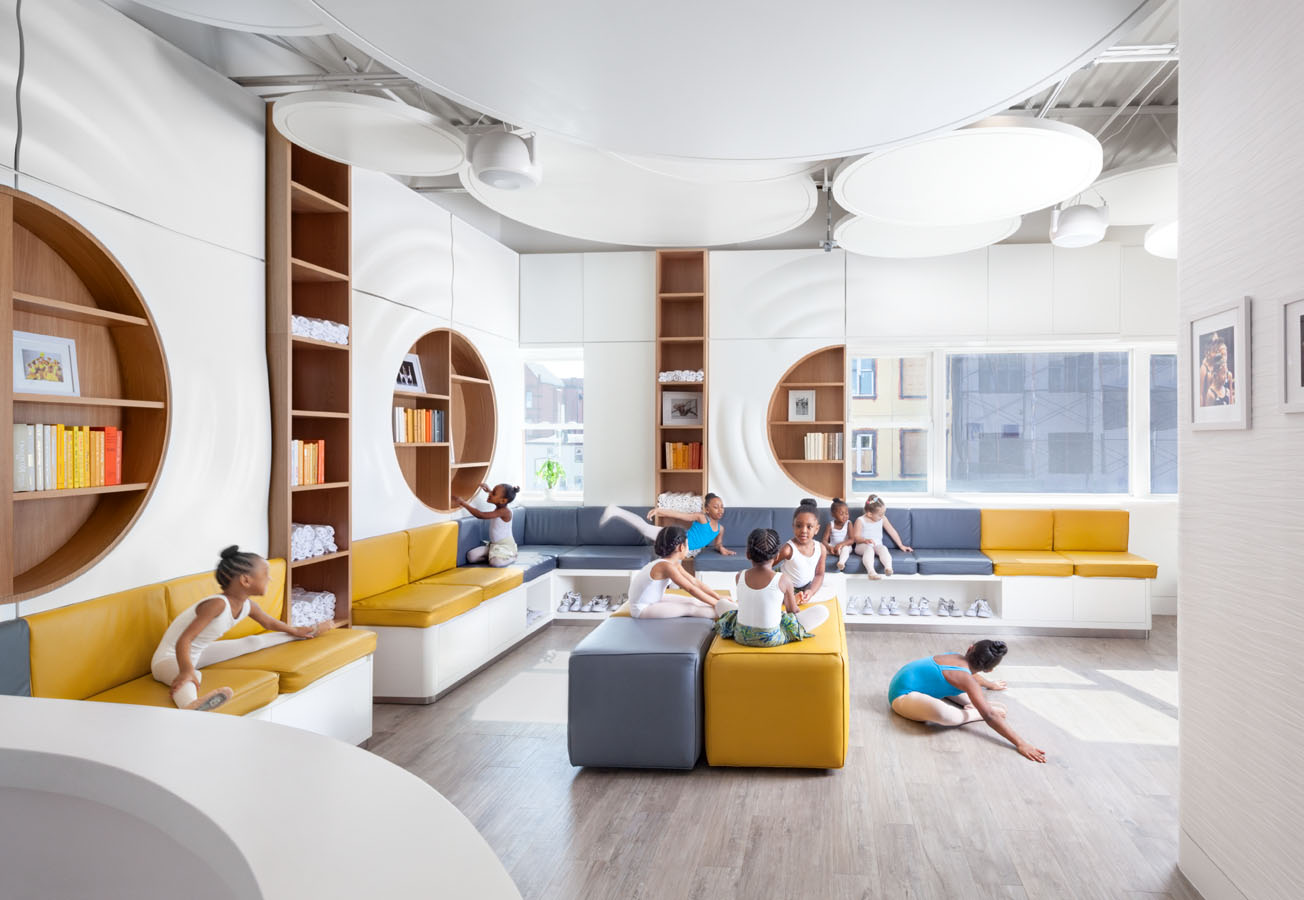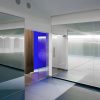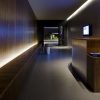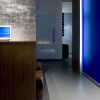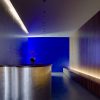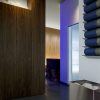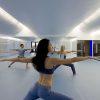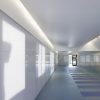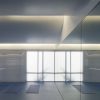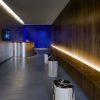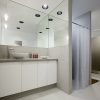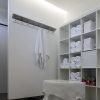
Yoga is more than stretching; it’s about inner peace. It’s about balance.
Yoga Deva is more than even that.
Yoga Deva (Sanskrit for deity) is a place designed to remove visitors from the places from which they came. The internal sequence of space peels away noisy, distracting, outside stimuli to create a truly peaceful experience. This process to get to this point was far from simple.
Existing as a series of vessels, Yoga Deva from the outside, looks like any regular, bland building. Entry occurs in a dark, tunnel-like vessel. This space is long, narrow and lined with dark pigment, dark-wood walls and dark-wood millwork. A communal seating area is built into the length of the eastern wall and illuminated by soft cove lighting.
The western wall, fashioned in aluminum gliding, shimmers when lit from above, offering soft, muted reflections of those passing through.
The tunnel ends in a wall bathed in electric pigmented blue, prompting visitors to, quite literally, go toward the light. Most people speak in hushed tones without being asked, as there aren’t any signs or distractions inside the volume.
“We wanted to remove visitors from the context they just came from,” said blank studio architect Matthew Trzebiatowski. “Remove any memory of differentiated experiences.”
Once past the entryway, the studio itself is awash in natural light. Translucent panels hide the existing harsh windows and allow the sun to softly brighten the interior. This main studio can be heated or cooled depending on the classes being held. Their most popular class, hot yoga, requires the room to be 105 degrees.
Few scents are noticeable, as co-owners Shosh and Billy have sensitive olfactory senses. Crushed sage and natural herbs waft lightly through the entire complex.
This illusion of being transported somewhere else was purposeful and possible only by careful design. Electric, HVAC and other unsightly systems are hidden inside the space of three, cylindrical inverted vaults running along the length of the studio ceiling and concealed again in the entry tunnel.
Special care was also taken in the selection of materials for the project. blank studio was very selective in choosing manufacturers that provided goods with low carbon footprints, used low- or no VOC paint and relied on lighting, instead of extra materials, to hide unwanted elements.
The crown jewel of the 2800-square-foot Yoga Deva lies in Shosh’s hand-laid, cobalt-blue, aluminum leafing in the entry hallway. Each four-inch square was laid individually, giving the long aluminum wall a sense of depth and texture that at blends in and is separated from the rest of the area. Visitors often touch and ask about this unique element, proving it was well worth the time Shosh took to put it together.
Yoga Deva offers various styles of classical Hatha yoga. [photos: Bill Timmerman]
[latest articles]
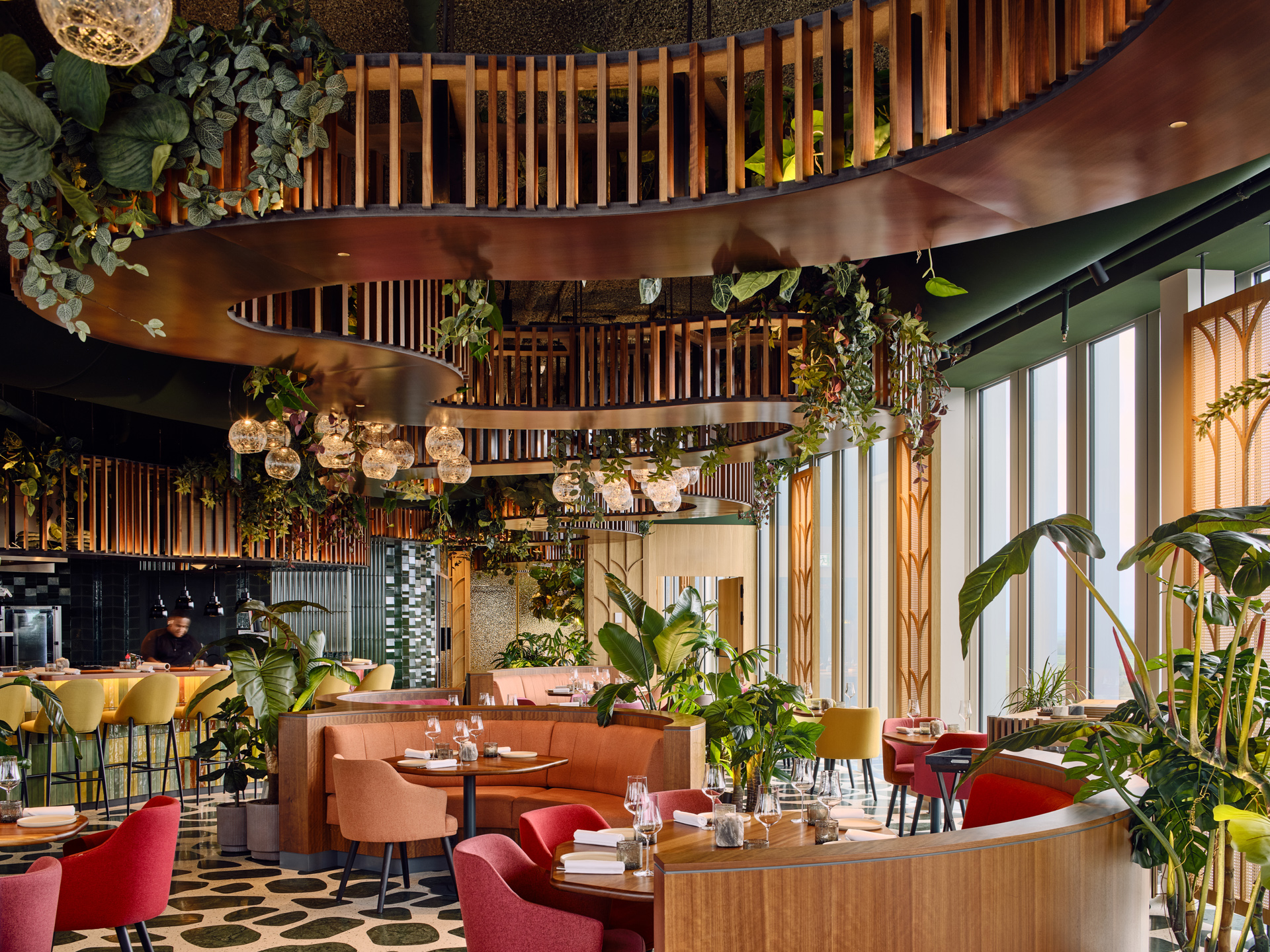
Selva Restaurant: A Design Inspired Dining Experience in Amsterdam
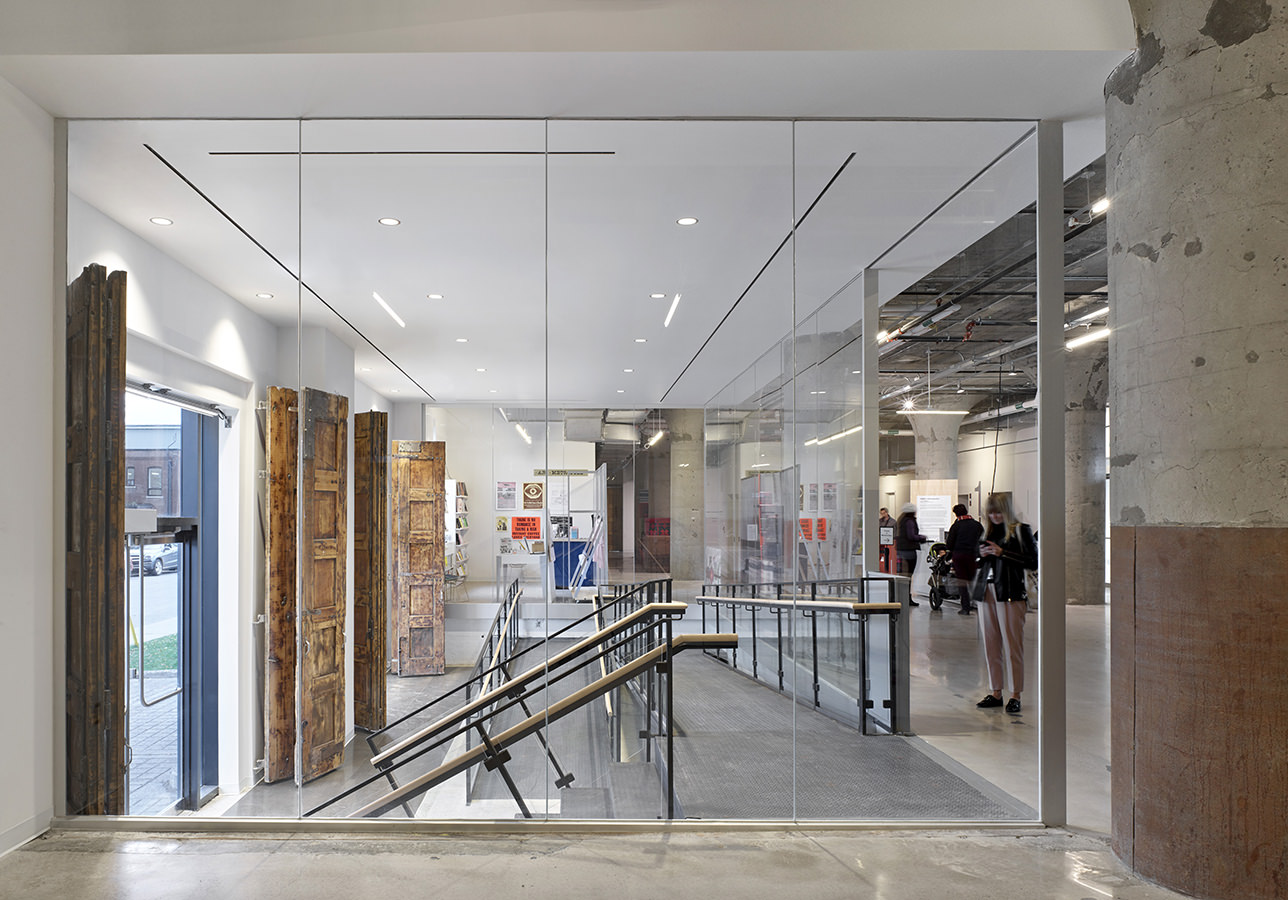
New Home of Toronto’s Museum of Contemporary Art
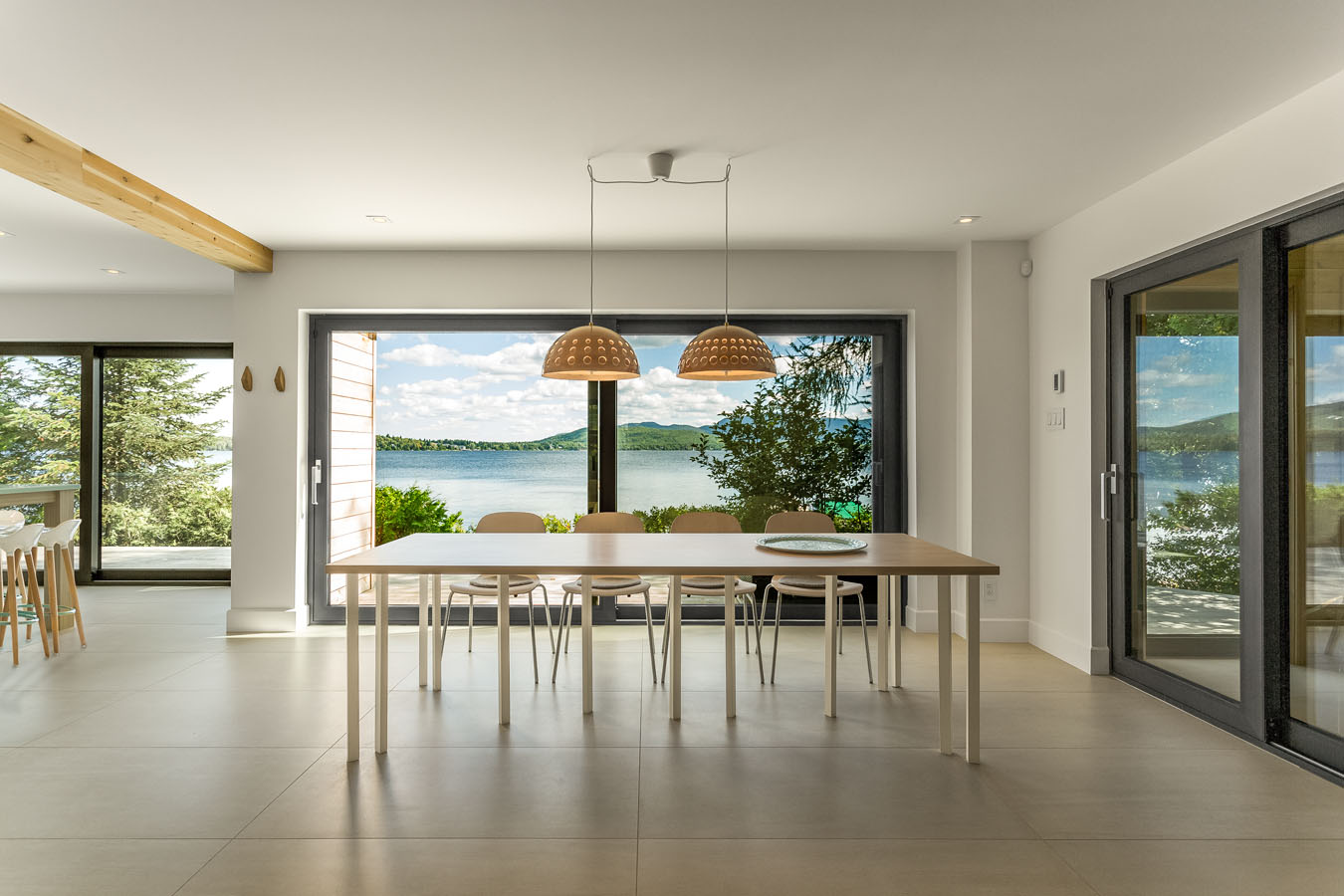
Nordic Architecture and Sleek Interior Design
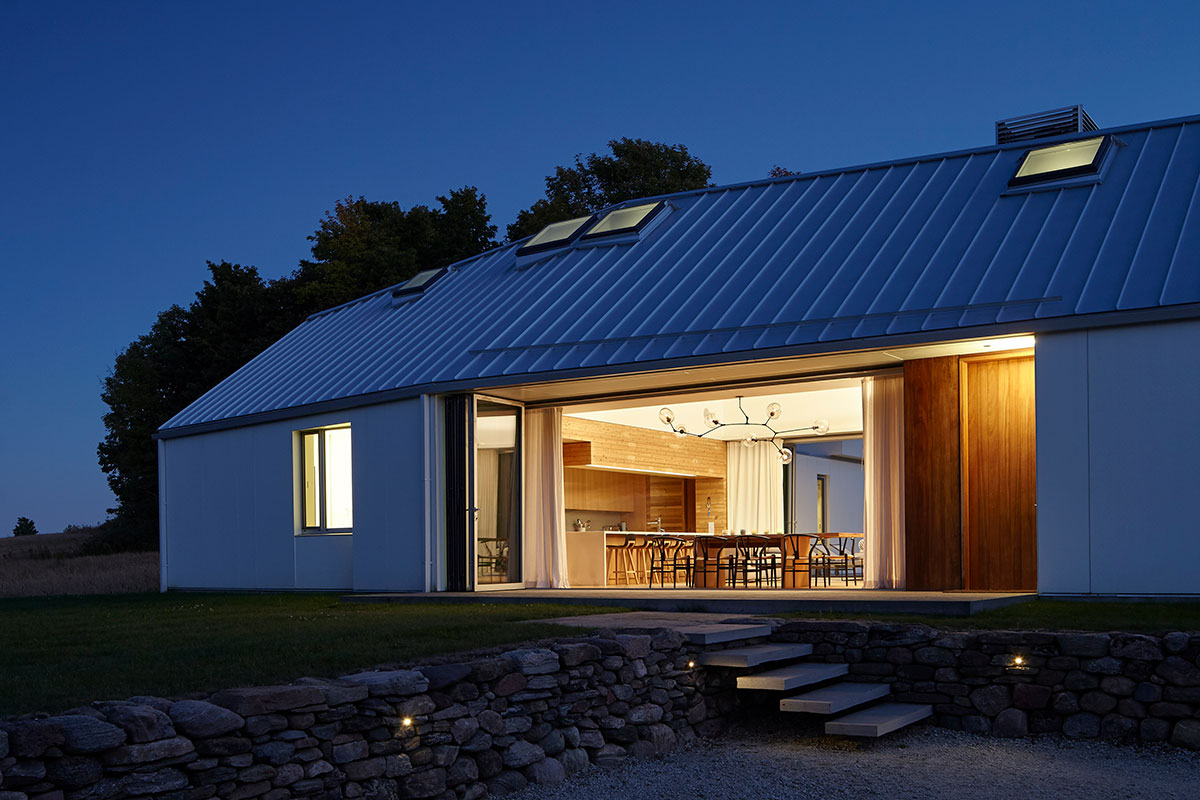
Charting a New Course at Compass House
